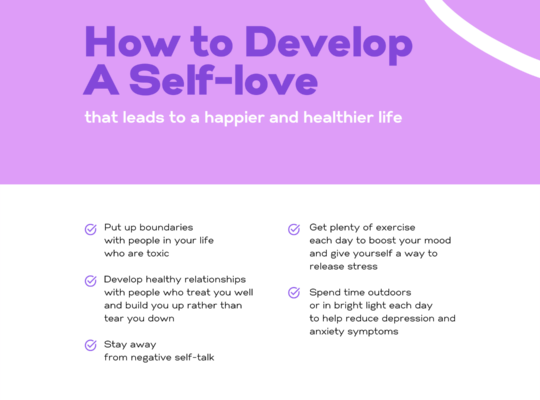In the vast realm of spiritual healing and personal growth, one concept that stands out is “Shadow Work.” It’s not just a buzzword in the spiritual community; it’s a transformative practice that holds the key to understanding our deepest selves. In this article, we’ll dive deep into the realm of shadow work, exploring why it’s essential and how it can enrich your spiritual healing journey. So, are you ready to shine a light on your inner shadows and embark on a profound quest of self-discovery? Then now is the time to start Unveiling the Power of Shadow Work: A Spiritual Journey Within.
Table of Contents
- What Is Shadow Work?
- The Importance of Shadow Work
- Why Shadow Work Is Needed on Your Spiritual Healing Journey
- Getting Started with Shadow Work
- Exploring Your Inner Darkness
- Embracing Your Shadow Self
- The Transformational Power of Shadow Work
- Shadow Work Prompts: Your Guiding Light
- Incorporating Shadow Work into Your Daily Routine
- Overcoming Common Challenges in Shadow Work
- Shadow Work and Inner Peace
- Conclusion: Embrace Your Shadows and Shine Brightly
What Is Shadow Work?
Shadow work is the process of exploring and addressing the hidden, suppressed, or ignored aspects of your psyche. These aspects, often referred to as your “shadow,” are composed of thoughts, emotions, and memories that you may find uncomfortable or unacceptable. It’s like peeling back the layers of your subconscious to reveal the raw, unfiltered essence of who you are.

The Importance of Shadow Work
Why should you bother delving into the depths of your shadow self? The answer lies in the profound transformation it can bring to your life. By acknowledging and working with your shadow, you can:
- Heal Past Traumas: Shadow work allows you to confront and heal wounds from your past, liberating you from their ongoing influence on your life.
- Enhance Self-Awareness: It’s impossible to fully know yourself without acknowledging your shadows. Understanding your dark side leads to a deeper self-awareness.
- Embrace Wholeness: Integrating your shadow self leads to a sense of wholeness. You become more authentic and less burdened by inner conflicts.
Why Shadow Work Is Needed on Your Spiritual Healing Journey
Your spiritual healing journey is about transcending limitations, finding inner peace, and connecting with your higher self. However, this path isn’t all sunshine and rainbows. It’s essential to recognize that your shadows can cast a long and persistent darkness on this journey. Here’s why shadow work is crucial:
- Removing Blockages: Unresolved issues from your past can create energetic blockages that hinder your spiritual growth. Shadow work removes these blockages, allowing your energy to flow freely.
- True Self-Discovery: To truly understand yourself at a soul level, you must explore every facet of your being, including the hidden corners of your psyche.
- Balancing Light and Dark: Balance is key in spirituality. Embracing your shadows helps you find harmony between your light and dark aspects.
Getting Started with Shadow Work
Now that you understand the significance of shadow work, let’s explore how to get started. Remember, this journey is deeply personal, and there’s no one-size-fits-all approach. However, here are some general steps to help you embark on your shadow work journey:
- Set Your Intentions: Begin with a clear intention to explore your shadows and heal. Intentions are powerful guides on your journey.
- Create a Safe Space: Find a quiet, safe space where you can reflect without distractions or interruptions.
- Journaling: Start by journaling your thoughts, feelings, and memories. Allow your thoughts to flow freely onto the pages.
- Seek Guidance: Consider working with a therapist, counselor, or spiritual mentor who can provide support and guidance on your journey.
Exploring Your Inner Darkness
The path of shadow work often involves confronting uncomfortable truths and emotions. It’s a courageous exploration of the aspects of yourself that you may have denied or disowned. As you delve into your inner darkness, you may encounter:
- Repressed Emotions: Emotions you’ve buried deep within, such as anger, fear, or shame.
- Limiting Beliefs: Negative beliefs about yourself that have held you back in life.
- Unhealed Wounds: Past traumas that still affect your thoughts and behaviors.
Embracing Your Shadow Self
Embracing your shadow self doesn’t mean becoming consumed by darkness; rather, it’s about acknowledging and integrating these aspects into your whole being. Here’s how to embrace your shadow self:
- Practice Self-Compassion: Be gentle with yourself as you uncover painful truths. Self-compassion is a crucial part of the healing process.
- Acceptance: Accept that your shadow self is a part of you. It’s not something to be rejected but understood.
- Integration: Work on integrating the lessons and wisdom your shadows hold into your everyday life.
The Transformational Power of Shadow Work
The process of shadow work is profoundly transformational. As you continue your journey, you’ll experience:
- Increased Self-Love: Embracing your shadows leads to greater self-acceptance and self-love.
- Personal Growth: You’ll find that you’re better equipped to overcome challenges and grow as an individual.
- Spiritual Awakening: Many individuals report profound spiritual insights and awakenings during their shadow work.
Shadow Work Prompts: Your Guiding Light
A valuable tool in your shadow work journey is the use of shadow work prompts. These prompts are questions or statements designed to trigger self-reflection and exploration. Here are some powerful shadow work prompts to get you started:
- What is a fear or insecurity that I’ve been avoiding?
- Can I identify a recurring pattern in my past relationships or experiences?
- What childhood memories or experiences have had a lasting impact on me?
- What aspects of myself do I find it challenging to love or accept?
- Am I living in alignment with my true values and desires?
Incorporating Shadow Work into Your Daily Routine
Shadow work isn’t a one-time event; it’s an ongoing practice. To make it a part of your daily life, consider these strategies:
- Morning Reflection: Spend a few minutes each morning reflecting on your intentions for the day and any emotions or thoughts that arise.
- Journaling: Set aside time to journal regularly, allowing your inner thoughts and feelings to flow onto the pages.
- Meditation: Incorporate meditation into your routine to cultivate mindfulness and self-awareness.
Overcoming Common Challenges in Shadow Work
Shadow work isn’t always smooth sailing. It can be challenging, and you may encounter resistance along the way. Here are some common challenges and how to overcome them:
- Fear of the Unknown: Facing your shadows can be scary, but remember that you have the inner strength to confront them.
- Feeling Overwhelmed: If you feel overwhelmed, take a step back and seek support from a therapist or mentor.
- Impatience: Shadow work takes time. Be patient with yourself and trust the process.
Shadow Work and Inner Peace
Ultimately, the purpose of shadow work is to find inner peace. By acknowledging and integrating your shadows, you free yourself from their power over your life. Inner peace is the result of embracing your authentic self and finding harmony within.
Conclusion: Embrace Your Shadows and Shine Brightly
In your spiritual healing journey, shadow work is not an option; it’s a necessity. It’s the path to self-discovery, healing, and transformation. By delving into your inner darkness and embracing your shadow self, you can unlock the full potential of your spiritual journey. So, are you ready to embark on this profound adventure of self-exploration and growth?
Frequently Asked Questions
- What is the difference between shadow work and therapy? Shadow work is a personal growth practice focused on exploring your inner shadows and integrating them into your life. Therapy, on the other hand, is a professional mental health service that addresses a wide range of psychological issues. While they can complement each other, they serve different purposes.
- Is shadow work suitable for everyone? Shadow work can be beneficial for most individuals, but it may not be suitable for those currently experiencing severe mental health issues or trauma. In such cases, it’s essential to seek guidance from a qualified mental health professional before engaging in shadow work.
- How long does it take to see results from shadow work? The timeline for experiencing results from shadow work varies from person to person. Some may notice immediate shifts in their awareness and well-being, while others may require more time and consistent practice. Patience and dedication are key.
- Can I do shadow work on my own, or do I need a guide or mentor? While it’s possible to engage in shadow work on your own, many individuals find it helpful to have a guide, mentor, or therapist to provide support and guidance throughout the process. Having a trusted companion can enhance your experience and help you navigate challenging moments.
- Is shadow work a one-time process, or is it ongoing? Shadow work is an ongoing process. It’s not a one-time event but a lifelong journey of self-discovery and growth. As you evolve and face new challenges, your shadow work may take different forms, making it a continual practice in your spiritual journey.
A Wee Bit More
IF you need help on your healing journey please check out the map it out assessment to book your free one on one consultation. I hope you enjoyed this Unveiling the Power of Shadow Work: A Spiritual Journey Within blog post. Don’t forget to join our community on Facebook check out the group The Tarot Hub






